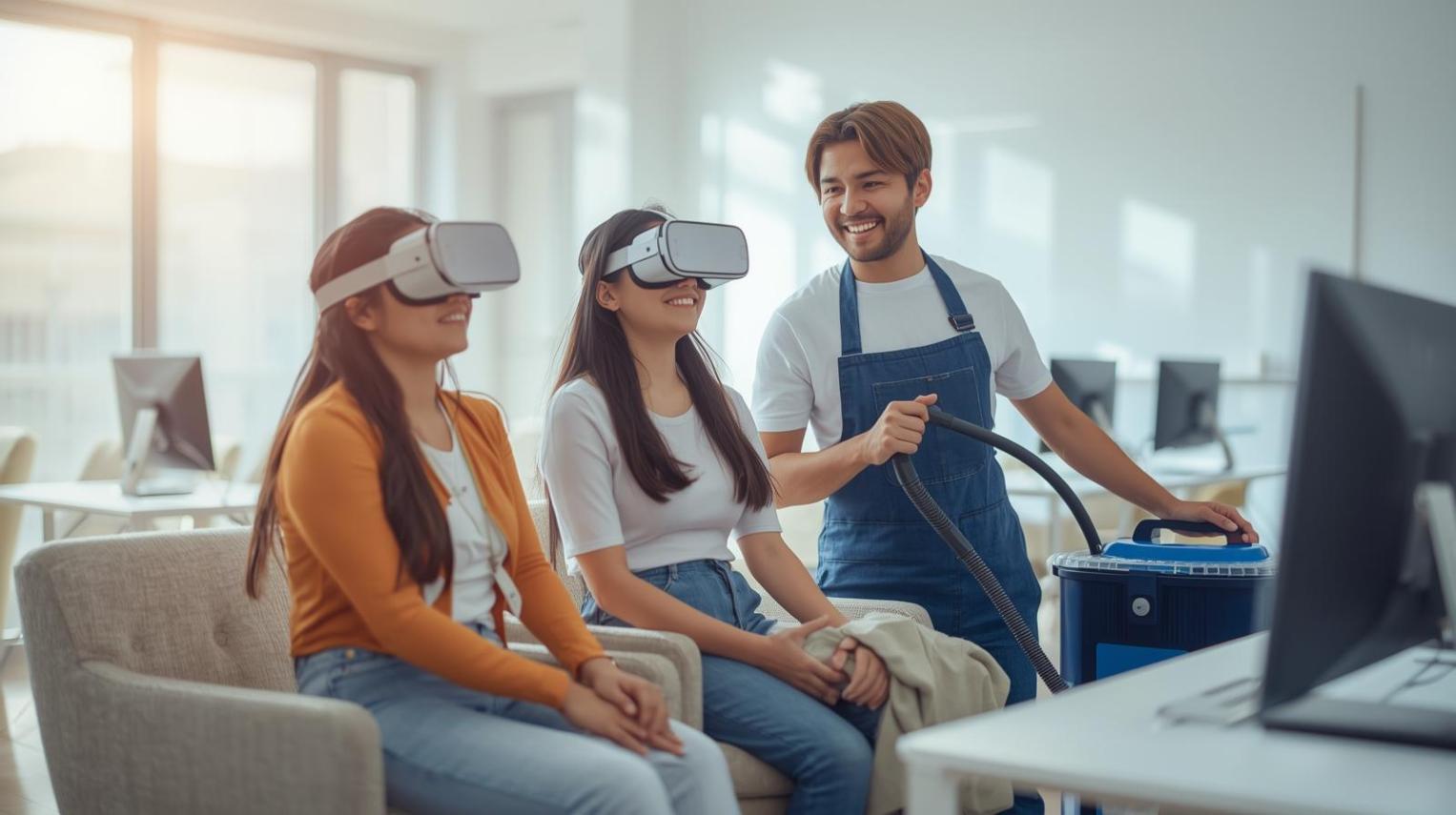
Virtual reality (VR) technology is helping students in learning the practical aspects of maintenance, design, and hygiene management in new ways. One of the more unexpected applications is teaching students how to maintain hygienically clean upholstered furniture in educational and commercial environments.
With VR technology, students learn the science and technology of fabric care and disinfection and the environmentally sustainable cleaning processes through immersive visuals and interactive simulations, all without any hands-on cleaning.
Integrating digital learning into technical programs means that, in these institutions, VR is more than a tech gimmick. With the help of headsets and motion controllers, students engage in activities that involve virtually inspecting furniture surfaces, identifying a range of contaminants, and trying out different cleaning techniques, all of which in real life involve piles of expensive cleaning materials and setups.
Blending Science and Practical Learning
Educational technologists understand the value of experiential learning combined with VR technology. Lessons in upholstery care and hygiene maintenance turn into engaging, safe, and most importantly repeatable activities. For example, trainees analyze different virtual cleaning solutions, study bacterial growth through virtual microscopes, and control reaction science in virtual materials to examine the properties of those materials.
Several trade schools are now incorporating virtual reality lessons into the curriculum for chemistry, environmental science, and building maintenance. Students learn how various cleaning agents work with different types of fabric, how microorganisms thrive on dirtied furniture, and what advanced sanitizing technology can help prevent that.
This type of integrated learning develops technical skills and deepens one’s environmental conscience.
ALSO READ: Why Educators Should Pay Attention to the Digital Reinvention of White Pages
Cleaner Classrooms and More Technology
As campuses invest in cleaner, healthier environments, there is a stronger connection between technology and hygiene. VR helps bridge that gap by teaching students standards of cleanliness in the home and in institutions.
Hygiene is especially critical in shared learning spaces, so VR-based training is vital in preparing future professionals in the cleaning and maintenance industries so they appreciate the disinfection procedures and furniture cleaning techniques necessary in their work.
Moreover, this technology can scale beyond classrooms. Cleaning and maintenance service companies use the same VR simulations and train employees in less time and with greater effectiveness. By digitizing real-life scenarios of cleaning, companies enhance task uniformity, minimize time, and improve eco-sustainability in their entire operations.
A Cleaner Vision for the Future
Virtual reality technologies are showcasing how practical education in hygiene can be integrated into different training programs. By using VR technologies to teach engineering, designing, and facility maintenance, schools are developing a workforce with a fundamental appreciation for both innovation and hygiene.
The integration of maintenance, hygiene education, and technology will be on the cutting edge of how we care for and uphold public and private sectors in the future. Such environments will be smarter and more sustainable.




 Some of the interactive features that modern e-libraries have added to go beyond just text are videos, glossaries, and tests. These tools make learning better by getting students more involved and making complicated ideas easier to understand.
Some of the interactive features that modern e-libraries have added to go beyond just text are videos, glossaries, and tests. These tools make learning better by getting students more involved and making complicated ideas easier to understand.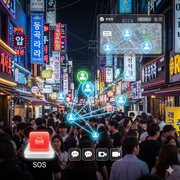 Receive instant notifications from trusted contacts whenever they feel threatened.
Receive instant notifications from trusted contacts whenever they feel threatened.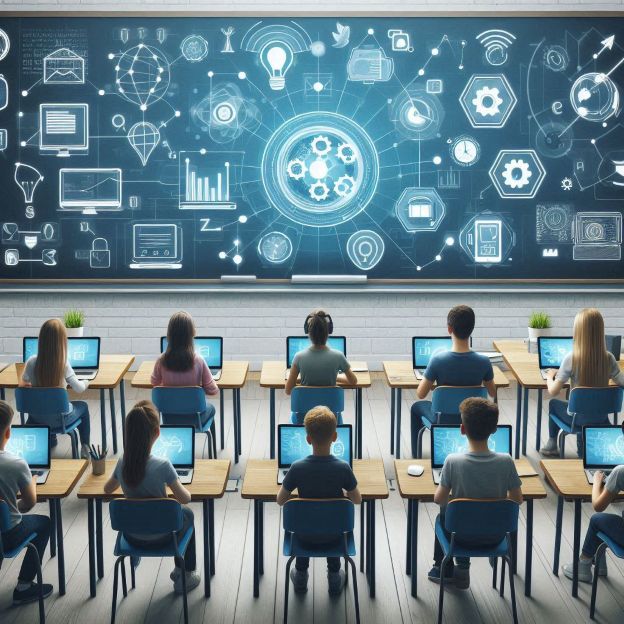


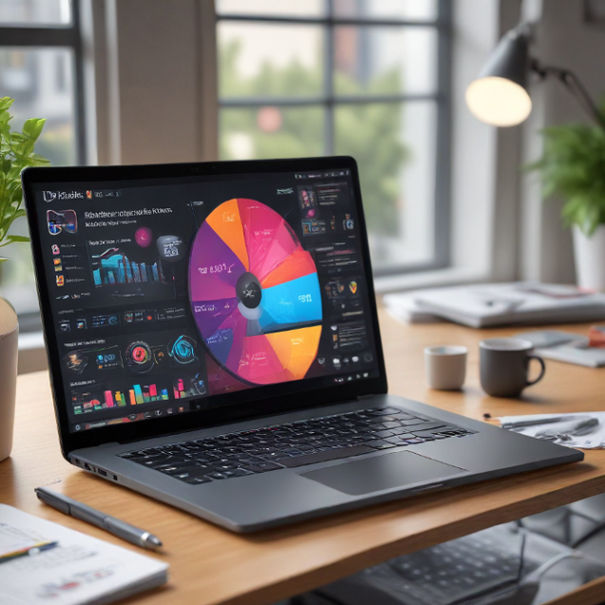
 Leather bags have long been a symbol of style and luxury. They offer durability, a classic look, and a timeless appeal particularly the bags from suvinocorp.com/en/suvino-showcase/.
Leather bags have long been a symbol of style and luxury. They offer durability, a classic look, and a timeless appeal particularly the bags from suvinocorp.com/en/suvino-showcase/.  Play is important for learning, but too much screen time might backfire. Young children learn through exploration, play, and exercise. Some worry that tablets will replace these vital tasks.
Play is important for learning, but too much screen time might backfire. Young children learn through exploration, play, and exercise. Some worry that tablets will replace these vital tasks. If you use these tips, you can make online classes for adults that are not only useful and informative, but also fun and interesting. Remember that people want to learn new things and get better at the things they already know. You can help them reach their goals by giving them a well-structured and dynamic learning experience.
If you use these tips, you can make online classes for adults that are not only useful and informative, but also fun and interesting. Remember that people want to learn new things and get better at the things they already know. You can help them reach their goals by giving them a well-structured and dynamic learning experience.
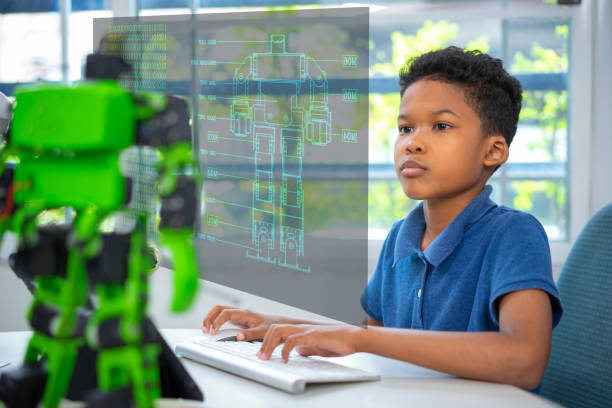















 ICT students come across an application called Content Management System (CMS), a
ICT students come across an application called Content Management System (CMS), a 
 signage package tools. That way, users have the chance to learn how to access and manage the CMS supported digital signage content.
signage package tools. That way, users have the chance to learn how to access and manage the CMS supported digital signage content.























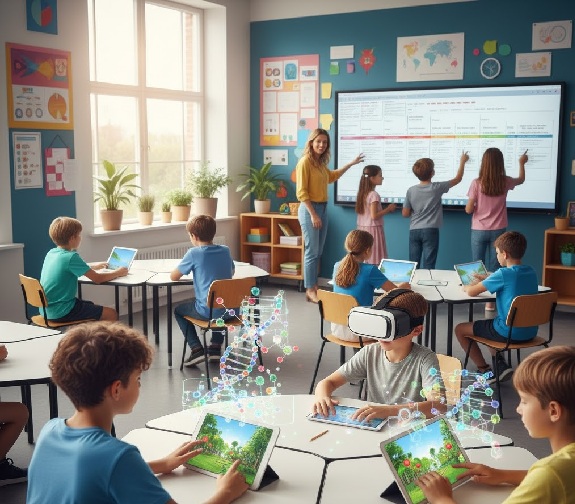


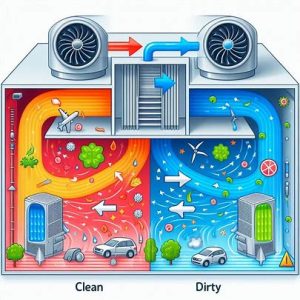

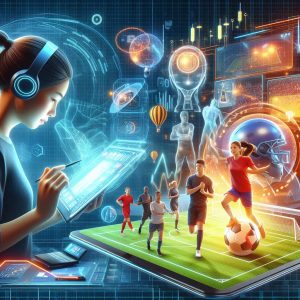 Technology has reshaped how we learn and how we enjoy sports. From virtual classrooms to interactive Free sports broadcast (source: 무료스포츠중계), its impact is profound. Education and entertainment are now more accessible, engaging, and efficient than ever before.
Technology has reshaped how we learn and how we enjoy sports. From virtual classrooms to interactive Free sports broadcast (source: 무료스포츠중계), its impact is profound. Education and entertainment are now more accessible, engaging, and efficient than ever before. Every driver knows that the right accessories can make a big difference on the road, boosting convenience, safety, and even your vehicle’s style. Smart car accessories have evolved to blend function with style, creating an enhanced driving experience that’s both seamless and enjoyable. There are numerous ways to improve your drive with smart add-ons, from Bluetooth-enabled keychains to high-tech tire pressure monitors.
Every driver knows that the right accessories can make a big difference on the road, boosting convenience, safety, and even your vehicle’s style. Smart car accessories have evolved to blend function with style, creating an enhanced driving experience that’s both seamless and enjoyable. There are numerous ways to improve your drive with smart add-ons, from Bluetooth-enabled keychains to high-tech tire pressure monitors. Benefits of Choosing TRD Rims
Benefits of Choosing TRD Rims In addition to performance benefits, TRD rims are designed with
In addition to performance benefits, TRD rims are designed with 
